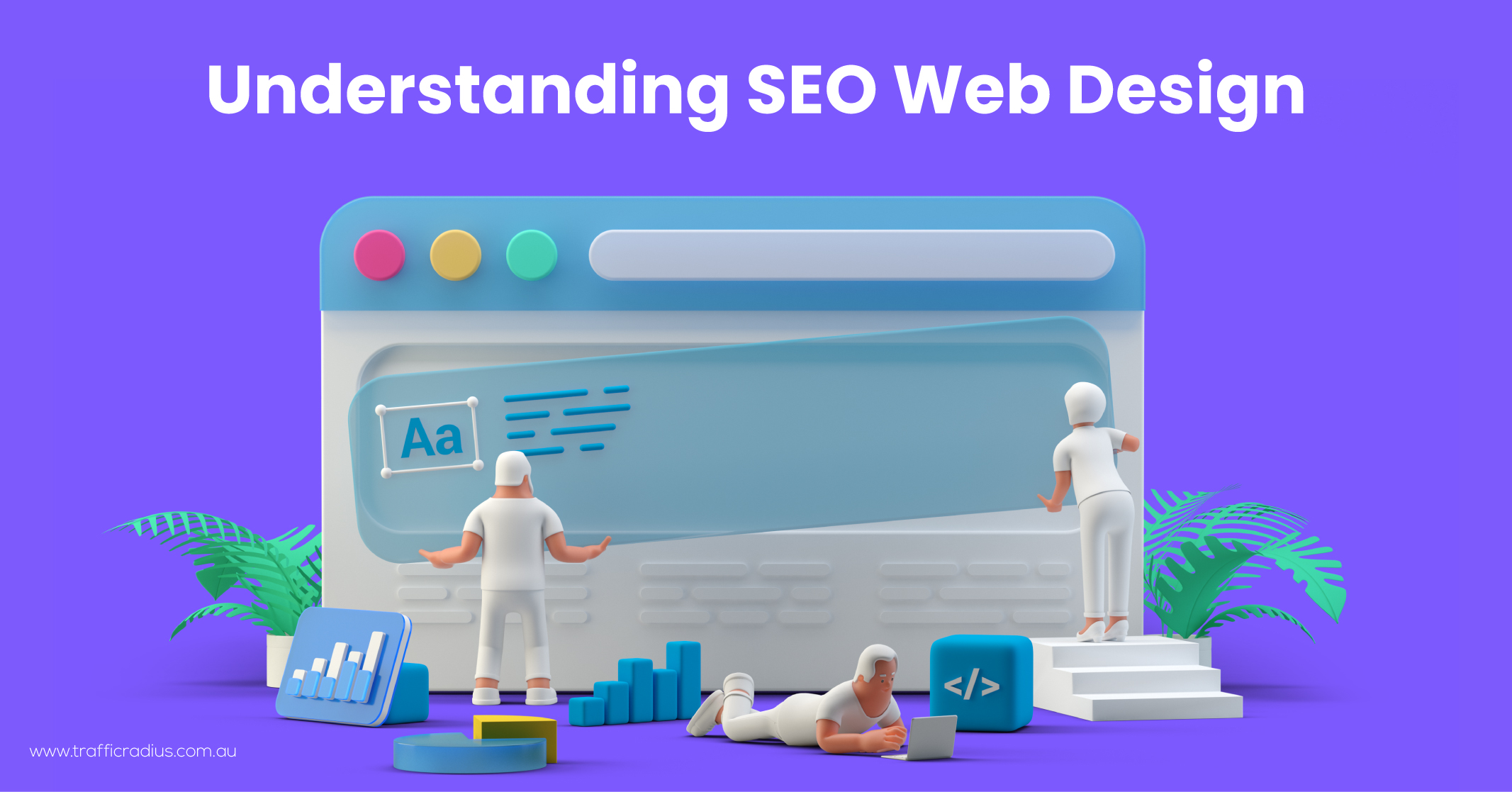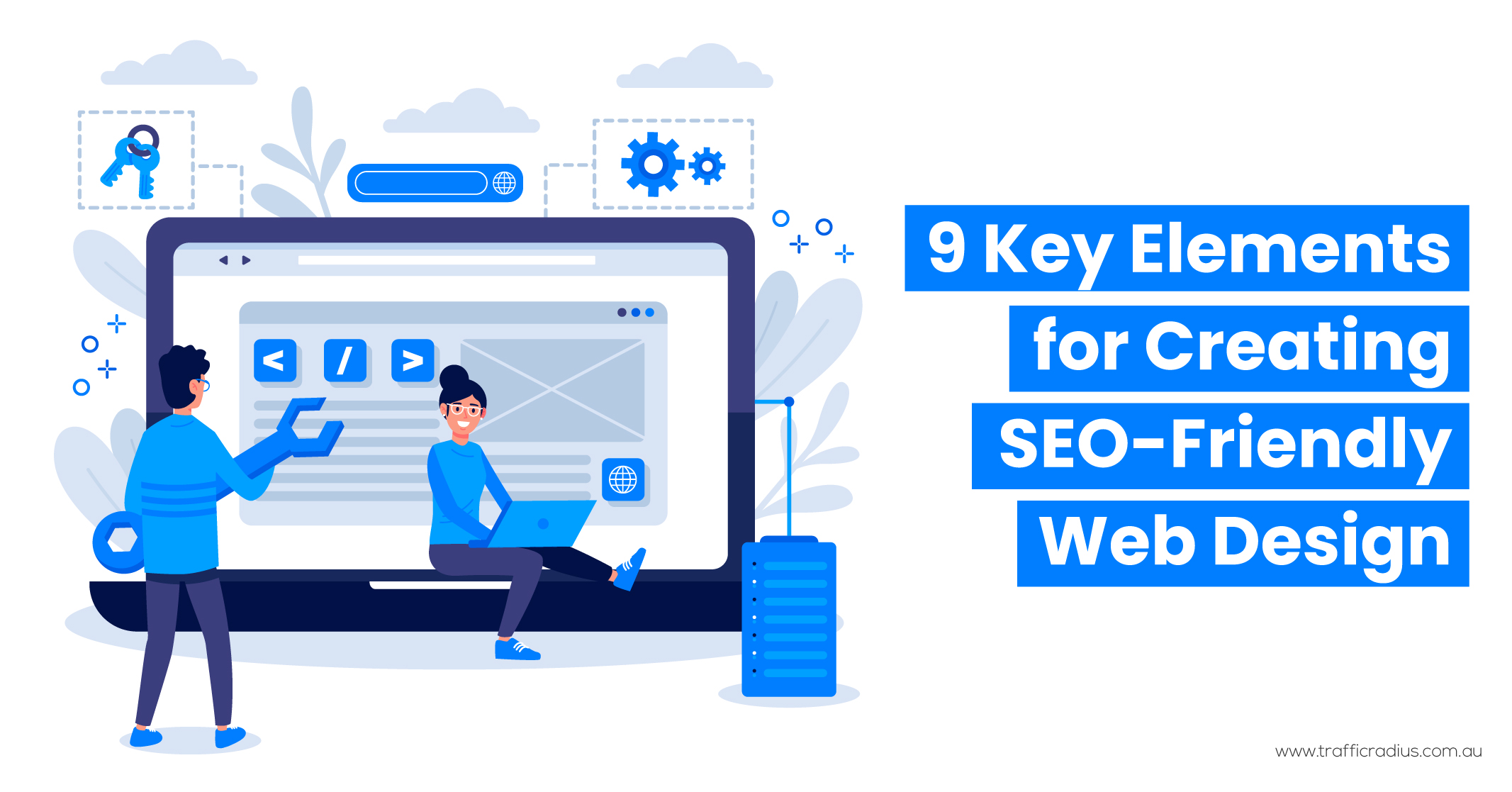I hope you enjoy reading this blog post.
If you want to get more traffic, Contact Us

Click Here - Free 30-Minute Strategy Session
Be quick! FREE spots are almost gone for this Month. Free Quote

At Traffic Radius, we understand the vital role of incorporating SEO into web design. By seamlessly integrating search engine optimisation practices during the website designing and building process, we help businesses increase their website’s rankings in search engine results and drive more traffic while enhancing the overall user experience.
Our expert team recognises that key organic ranking factors, such as mobile readiness and site speed, are directly influenced by the design of a website. This is why we emphasise the importance of a comprehensive approach where SEO considerations are woven into the fabric of the web design.

Click Here – Free 30-Minute Strategy Session
Be quick! FREE spots are almost gone for this Month
Google’s SEO starter guide emphasises the significance of involving an SEO expert when launching or redesigning a website. This ensures that the final result is not just visually appealing, but also search engine-friendly right from the foundation.
If you’re collaborating with external teams, it’s crucial to be mindful of ensuring compatibility between SEO web design and SEO services. At Traffic Radius, we ensure seamless integration, ensuring that both elements work harmoniously to maximise the online visibility and success of your website.
When it comes to SEO web design, our SEO services in Melbourne and beyond are designed to optimise your website’s performance, drive organic traffic, and boost your business’s online presence. Contact Traffic Radius today for expert SEO services and take your SEO web design to new heights.

Integrating SEO into web design revolves around incorporating search engine optimisation practices into the process of designing and building a website. This approach aims to enhance the website’s visibility in search engine rankings, resulting in increased traffic and an improved user experience.
The design of a website directly influences critical organic ranking factors like mobile readiness and site speed. By paying attention to these aspects during the web design phase, businesses can positively impact their website’s rankings in search engine results.
According to Google’s SEO starter guide, it is advisable to involve an SEO expert when launching or redesigning a website. This ensures that the outcome is crafted to be search engine-friendly right from its foundation.
If you’re collaborating with external teams, it is essential to exercise caution and ensure compatibility between SEO web design and SEO services. This ensures that both components work seamlessly together to maximise the effectiveness and success of your online presence.

When constructing a website, keep these factors in mind to ensure it is fully prepared for optimal rankings.
Google prioritises mobile-first crawling, indexing, and ranking of web pages due to the increasing dominance of mobile search. It is estimated that mobile accounts for over 60% of all searches. To ensure mobile SEO success, there are three approaches to building a mobile-friendly website:
In terms of content formatting for mobile, it’s crucial to consider the limited screen size. Mobile-friendly content should feature short paragraphs, appropriate font sizes (16px is recommended), ample white space, and avoid intrusive pop-ups.
It is important to adhere to mobile character limits for meta tags, such as 50-60 characters for title tags and under 120 characters for meta descriptions. Proper content formatting ensures readability and easy navigation on smaller mobile screens.
Page load speed plays a critical role in SEO success, as it affects both rankings and bounce rates. Faster load times lead to a lower bounce rate, as visitors are less likely to leave without exploring further.
Web design significantly impacts site speed since the size of the code determines how quickly pages load. To improve site speed, consider the following methods:
Google provides tools like PageSpeed Insights, offering insights into Core Web Vitals and specific recommendations to improve page speed.
By optimising page load times, businesses can enhance their SEO performance and provide a better user experience.
An intuitive website structure, also known as website architecture, enhances user navigation and aids search engines in discovering and comprehending your pages effectively.
To create an SEO-friendly website example and design, it is recommended to implement content buckets that group related pages together. This allows for a logical and intuitive URL structure, enabling easy navigation.
For instance, consider a website focusing on various dog breeds. The URL structure could be organised as follows:
Each level in the site structure delves into a more specific subcategory related to the initial topic. This type of intuitive web design offers several benefits:
By implementing an intuitive website structure, businesses can enhance both user experience and search engine optimisation efforts.
Internal linking is crucial for both search engine understanding of your website structure and facilitating user navigation.
There are two types of internal links to consider: navigational links and contextual links.
By utilising both navigational and contextual links, you can optimise your internal linking structure to improve search engine comprehension of your website’s hierarchy and enhance the overall user experience.
For the best SEO-friendly websites, they should be designed in a way that facilitates easy discovery and comprehension by search engines like Google. This involves ensuring proper indexability and crawlability.
To enhance crawlability and indexability, focus on the following:
By implementing these practices, you can improve your website’s crawlability and indexability, leading to better visibility and search engine performance.
SEO-friendly page design ensures a positive experience for both search engines and website visitors. Here are some essential guidelines to ensure your pages deliver a favourable experience:
By adhering to these guidelines, you can ensure that your web pages offer a positive experience, both in terms of search engine visibility and user satisfaction.
Search engines do not directly consider accessibility as a ranking factor integrated into their algorithms. This is because it is challenging to quantify accessibility with concrete metrics. However, accessibility does impact a known ranking factor: user experience. Therefore, when creating an SEO-friendly website, it is crucial to take accessibility into account.
Google provides its accessibility guidelines, which include the following recommendations:
To evaluate your website’s accessibility, you can run basic tests using the Google Lighthouse browser extension. This tool provides insights into areas where your site may fall short in terms of accessibility and offers guidance on achieving maximum accessibility.
By considering accessibility guidelines in your web design, you can create an SEO-friendly website that prioritises user experience and meets the needs of a diverse audience.

Schema markup is a structured data language used to provide search engines with detailed information about elements on your website, enabling them to understand and present it effectively.
By incorporating schema markup, search engines can extract valuable information directly from webpages and display it on search engine results pages (SERPs), enhancing the relevance and usefulness of search results for users.
Implementing schema markup not only improves search engine visibility but also opens up the potential for rich results. Rich results refer to search results that display additional visual or interactive elements, enhancing the user experience.
Google, for example, utilises structured data to showcase various content types such as FAQs, how-to sections and reviews directly on the search results page.
By incorporating schema markup into your website, you can provide search engines with additional context and optimise your chances of gaining enhanced and visually appealing search results.
Incorporating image optimisation into the website design phase can lead to increased traffic from image searches, providing additional opportunities for SEO.
Image SEO follows some fundamental principles outlined in Google’s image optimisation guide. To maximise image search potential, it is essential to ensure that each image on your website adheres to the following:
By implementing these image optimisation practices during the website design stage, you can enhance the visibility and discoverability of your website’s images in search engine results, attracting more targeted traffic to your site.
Incorporating SEO principles into website design has a positive impact on both user experience and business performance. Here are the key advantages:
By prioritising SEO during the web design process, you increase the likelihood of capturing organic traffic for your website. The aforementioned tips collectively enhance your chances of ranking well for your target keywords.
Emphasising the creation of high-quality content and building a strong backlink profile further enhances your potential for attracting organic traffic.
Starting your web design with SEO as a primary consideration sets the stage for optimal visibility in search engine results. By implementing these strategies, you can maximise your website’s chances of ranking prominently and attracting organic traffic to fuel your online success.
Incorporating SEO as an integral aspect of the website design process establishes a robust foundation for optimisation.
The search algorithm undergoes regular changes each year, encompassing both minor adjustments and significant updates. By starting the design process with SEO in mind, you position yourself to adapt more easily to future algorithm updates.
Considering SEO from the outset ensures that your website is built with best practices in mind, making it easier to stay aligned with evolving search engine requirements and ranking factors. By prioritising SEO during the design phase, you can future-proof your website and maintain its visibility and effectiveness as search algorithms evolve.
An SEO-optimised website is not only favourable for search engines but also for users, leaving them with a positive impression.
Studies show that 50% of individuals consider website design to be critical in forming their perception of a brand.
By designing and building your website according to SEO best practices, you set a solid foundation for achieving high performance.
Are you prepared to begin?
Contact Traffic Radius, one of the best SEO web design companies, to learn more.

LEAVE A REPLY